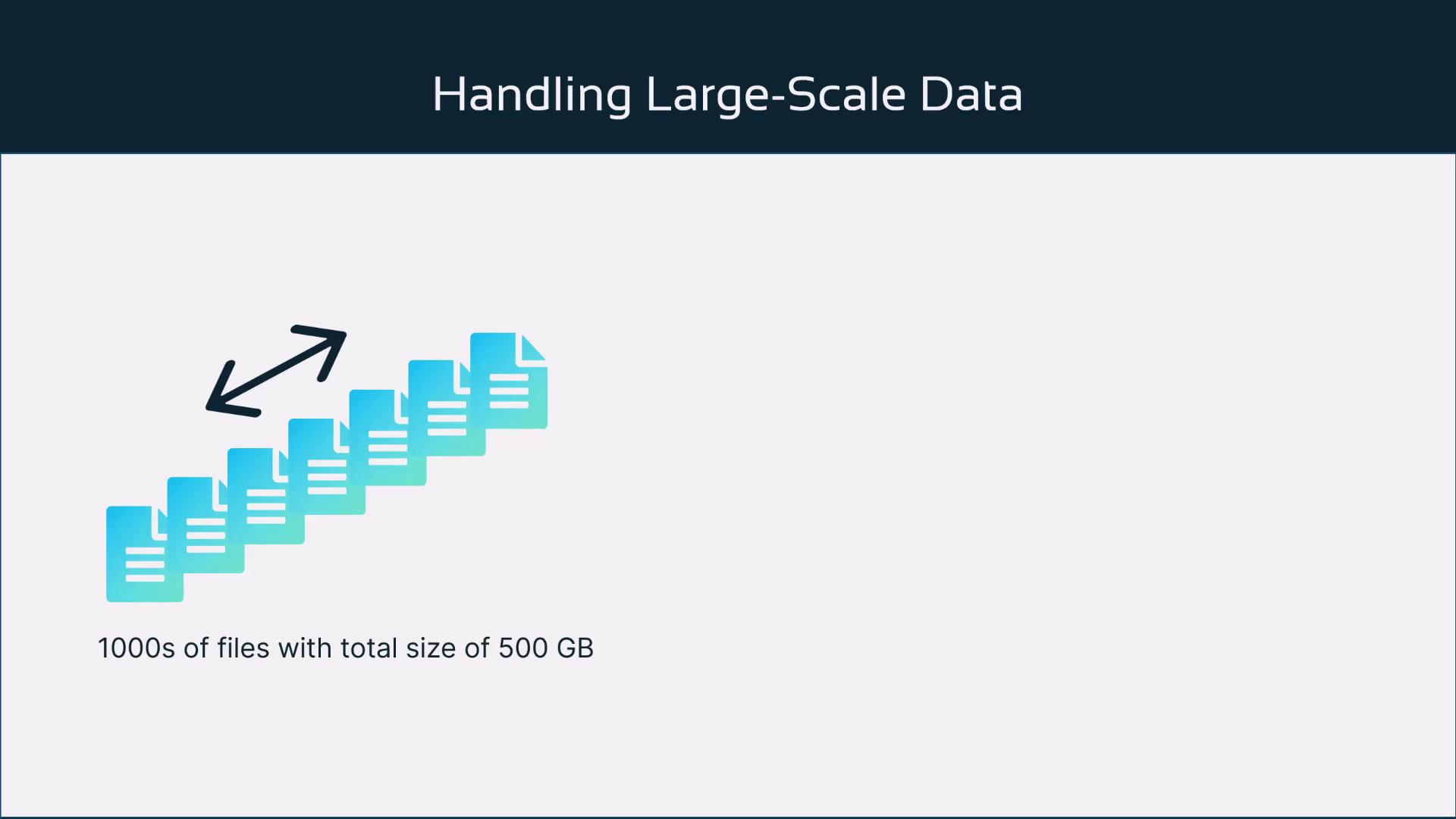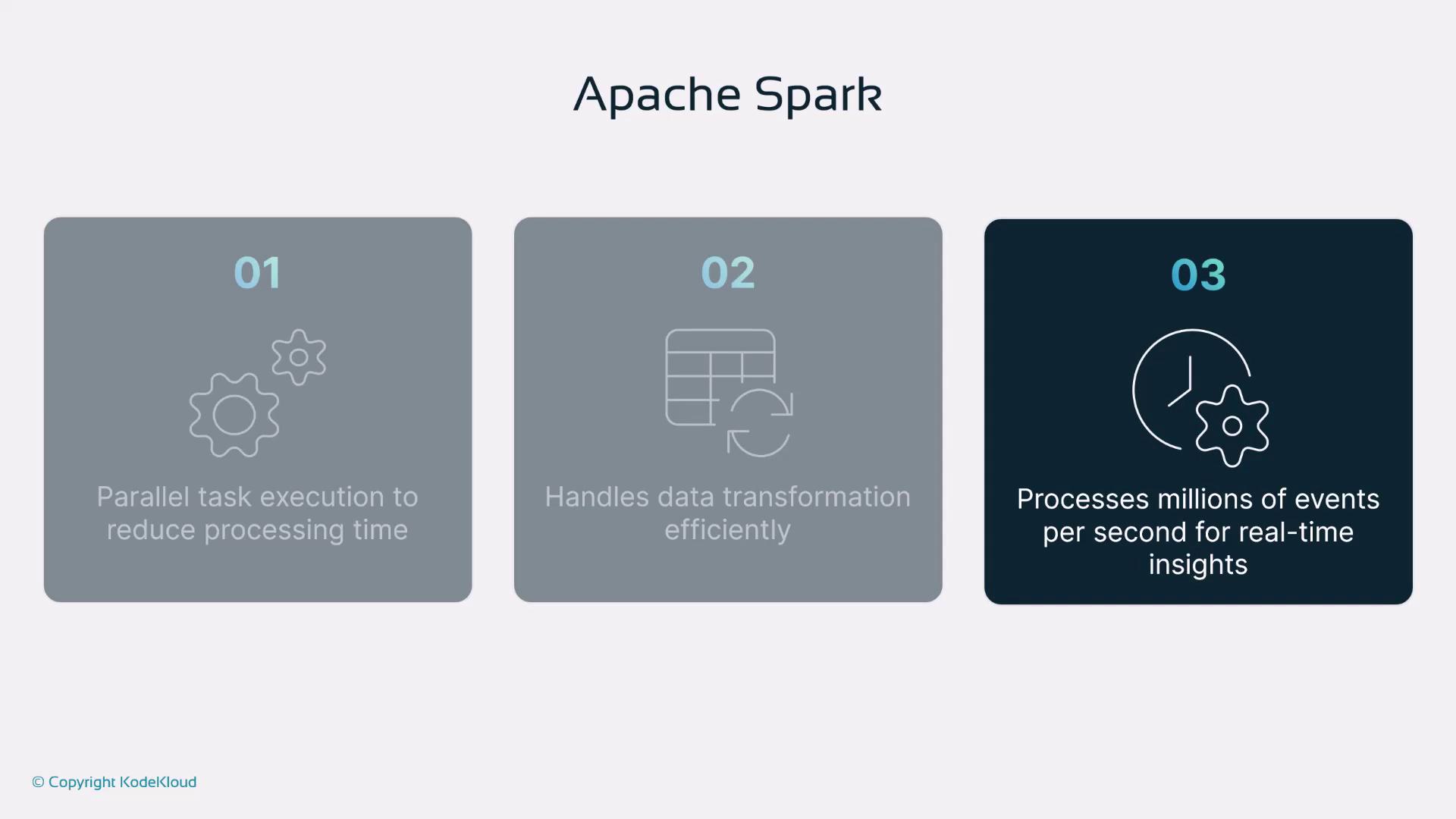Fundamentals of MLOps
Data Collection and Preparation
Large Datasets Apache Spark PySpark Dask
Welcome back! In our previous session, we explored data cleaning and transformation using Pandas—a fundamental skill for managing small datasets. Today, we shift our focus to processing very large datasets. When you need to manage thousands of files totaling up to 500 GB, a single server just isn’t enough. This is where distributed data processing tools like Apache Spark and Dask come into play. In this article, we will focus on Apache Spark.
Previously, we worked with file sizes around 50 MB. However, real-world applications often require processing thousands of files concurrently. This challenge is illustrated in the following slide:

Because such massive datasets cannot fit in the memory of a single server, distributed data processing is essential. Apache Spark leverages a distributed computing model to process large datasets across multiple nodes in a cluster, enabling parallel task execution that dramatically reduces processing time.
Key Benefits of Apache Spark
- Parallel Processing: Enables real-time data analysis by dividing work across clusters.
- Fault Tolerance: Uses Resilient Distributed Datasets (RDDs) to automatically recover from node failures.
- In-memory Computation: Minimizes latency by reducing reliance on disk storage.
- Unified API: Supports multiple programming languages including Python, Java, and Scala.
For example, in e-commerce and healthcare industries, Apache Spark is used to analyze customer clickstream data and patient records respectively, processing millions of events per second to generate actionable insights.

Below are the key areas where Apache Spark excels:
Distributed Processing and Speed
Spark divides large datasets across multiple nodes, enabling parallel processing. For instance, sensor data from IoT devices can be processed in real time for predictive maintenance in manufacturing.Fault Tolerance for Reliability
Spark automatically recovers from node failures using Resilient Distributed Datasets (RDDs). This reliability is crucial in environments such as financial institutions where data integrity and uninterrupted processing are vital.In-Memory Computation for Efficiency
By processing data directly in memory rather than via disk storage, Spark minimizes latency. This advantage is particularly important in scenarios like fraud detection, where real-time insights are essential to preventing losses.Unified API for Versatility
Spark offers a unified API that supports multiple languages, making collaboration across diverse technical teams seamless.

It is worth noting that Apache Spark is written in Scala and its distributed architecture makes it a high-performance framework ideally suited for large-scale data operations. In MLOps engineering, Spark plays a critical role by providing real-time data aggregation for machine learning models during online serving.
This high-level overview demonstrates how Apache Spark’s advanced features, including distributed processing, fault tolerance, in-memory computation, and a versatile API, uniquely position it to efficiently handle large datasets.
Thank you for reading! For further insights, check out the following resources:
Watch Video
Watch video content